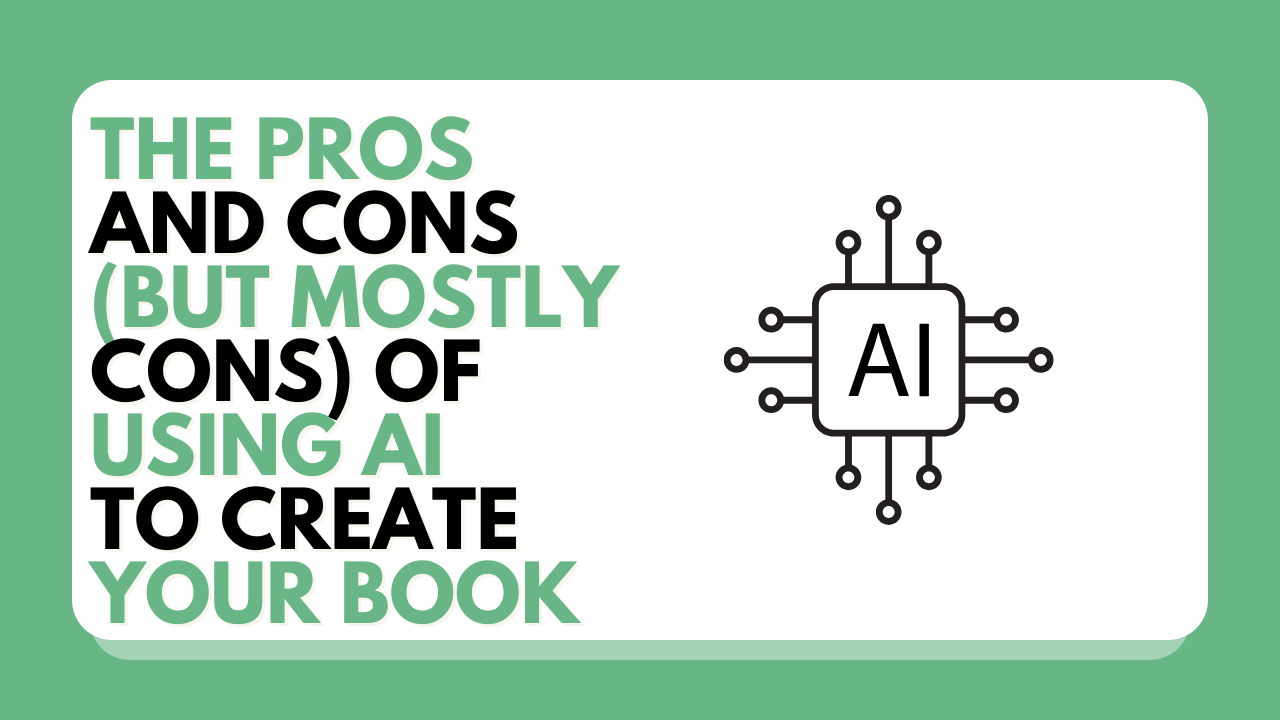The Pros and Cons (but Mostly Cons) of Using AI to Create Your Book

Artificial Intelligence (AI) is a great tool when used correctly. It can do some amazing things, like help you brainstorm ideas, get you unstuck when the dreaded writer’s block hits, or create new ways for you to word things. AI can also be a terrific support when you need a bit of a jump-start to get those creative juices flowing.
But what AI can’t do is share your voice, your story, and your creativity. And those are the things that make your book unique.
Downsides of Using AI-Generated Text
AI is a language predictor, so it can only generate content based on patterns that it has been trained on. Unlike you—an author—AI won’t produce an original idea, a compelling plot twist, or a unique structure. If you rely on AI to write your book—or significant portions of it—that content will likely be predictable, generic, and, frankly, boring.
You also have to be vigilant about the information AI provides, especially if you are writing a nonfiction book. AI has been known to “hallucinate”: fabricate facts, make up sources and citations, and even invent data. Keep in mind that it’s your credibility at stake, so if you rely solely on AI, you will lose your readers’ trust. You are the subject expert—write what you know.
Downsides of Using AI-Generated Art
The same downsides hold true for using AI to generate art, whether it is for your front cover or the images within your book.
Covers created by AI often look the same, lack emotion and nuance, or just don’t fit the content of the book. Further, AI-generated art never looks quite right; it simply appears “off”—e.g., images with a few extra fingers, unrealistic hair, or a hazy feel. As with the written word, AI must rely solely on its training data when creating art. The art isn’t original; it’s derivative. And readers notice. That’s because there is something missing . . . a human touch.
Professional designers like those who work at Greenleaf can create a fabulous—and distinctive—cover for your book. One that takes into account your thoughts, your message, and your feedback.
Additional Downsides
On the more practical side, as of the writing of this article, you cannot copyright works in the United States (and many other countries) that are solely generated or “created” by artificial intelligence. This isn’t limited to the written word; it also includes AI-generated art. When you use AI-generated art for your cover or interior images, you may be using someone else’s copyrighted work.
In addition, many platforms such as Amazon, IngramSpark, Apple Books, and Barnes & Noble Press require authors to disclose whether they’ve used AI in the creation of their book. Of course, these platforms vary in what they consider AI-generated (e.g., content created solely by AI) versus what is AI-assisted (e.g., author-created content that has been edited or refined by AI), but you must disclose it. And most readers simply do not want to read AI-generated books. They want your thoughts, your story, and your voice. They want the authenticity of a human author.
In the end, AI can be a powerful tool to help generate some ideas as you create your book. But it is a tool that should be used carefully. Do not let AI stifle or replace your voice, your story, and your contribution to the world. We want to hear and learn from you, the author.
